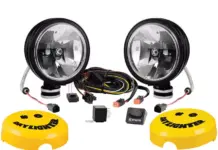Whether one is talking about large medical facilities or local support teams, mass casualty incidents (MCIs) are not only difficult to quantify, but they’re also incredibly challenging to deal with and mitigate.
Whether one is talking about large medical facilities or local support teams, mass casualty incidents (MCIs) are not only difficult to quantify, but they’re also incredibly challenging to deal with and mitigate.
Even more confusing is the definition or proposed requirements for what constitutes a mass casualty incident in the first place. Large-scale events involving 20 or more people with minor injuries seem like they would apply, but in most cases, they don’t.
A more limited incident that includes four or five people with major injuries doesn’t seem like it would qualify, yet it can. It’s more about the preparedness for all involved, as well as the medical requirements to support and treat those affected.
Mass casualty events can be caused by many things, such as natural disasters, explosions, terrorist attacks and mass shootings. Nearly every event or situation that would see a huge influx of patients with major or fatal injuries, as well as numerous deaths, counts as an MCI.
Summary of Technology:
- Drones And Smart Surveillance Tech
- Intelligent Patient Monitoring
- Intelligent Triage
- Proper Training And Stress Testing
- Modular On-Site Shelters
- 3D Printers For Universal Support
Analysis
This article talks about technology that isn’t even that advanced for response. For example, the triage priority card system is incredibly simple but helpful. This suggests that interventions don’t have to be overcomplicated for it to be useful. I find the idea of on site 3D printing interesting. Could this be a way to reduce the amount of equipment a responder would have to carry? In turn, it could allow people to use what they need and not have to carry items for a just in case situation. The use of modularity site response is also interesting.




